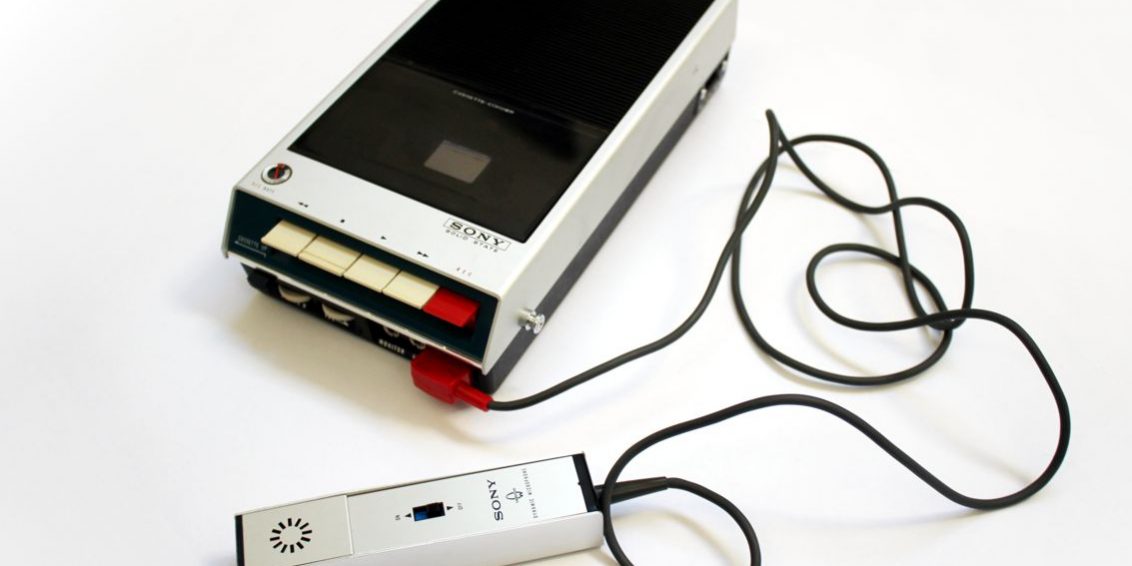WOLF retro DESIGN REVIEW. 19th February 2024
At over half a century old, this is still relatively compact.
A retro review looks at products that are at least over ten years old from a present-day WOLF design perspective. While the technology and fashion of the period influence design, and are taken into consideration, great design ideas will transcend their eras to be timeless.
Interesting and factual information may be provided, but our review aims to deliver insight from the perspective of a designer’s mind and eyes.

Classic simplicity
Introduction
Product Focus
As with most reviews the focus is on the design and its evolution within the industry. The functioning systems and sound quality are not necessarily considered.
Product description
The TC-100A was considered Sony’s first commercially available Cassette tape recorder. Launched in 1968 it was designed to be compact and portable.
Price and Availability.
At the time of this review there were several TC-100 units for sale on eBay asking between $50 – $130 dependant on condition and accessories. However, we noted that they were not necessarily selling so the accurate value is more likely to be between $20 and $80.
Additional information
There is very little written about the TC-100A which surprised us considering it was revolutionary concept. The TC-100A is said to have been the start or first step of the journey towards the era of Walkman’s a decade later.
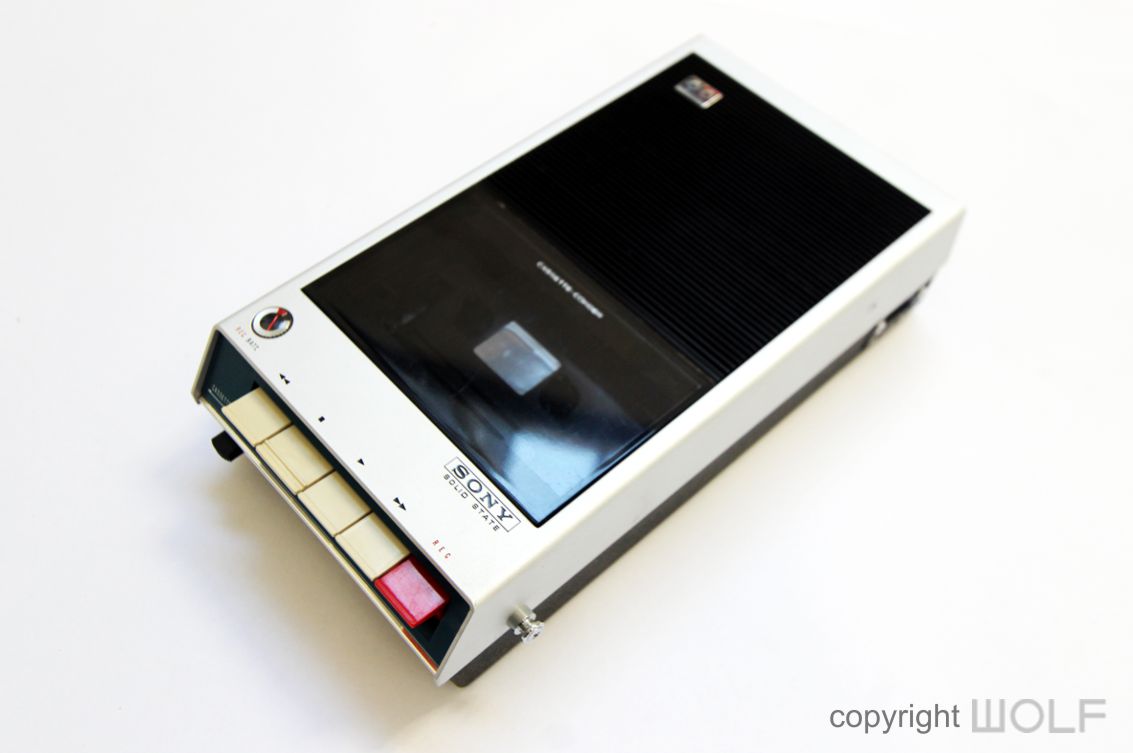
Review.
First impression/ Delight
It looks exactly how one might imagine an old portable cassette recorder to look. Simple, basic, and even little chunky. You might even describe it as rather featureless and boring. However, if you consider that this is from 1968, it would have been incredibly futuristic at the time, especially given that this was also the dawn of the cassette tape. With that in mind its timeless looks have survived well.
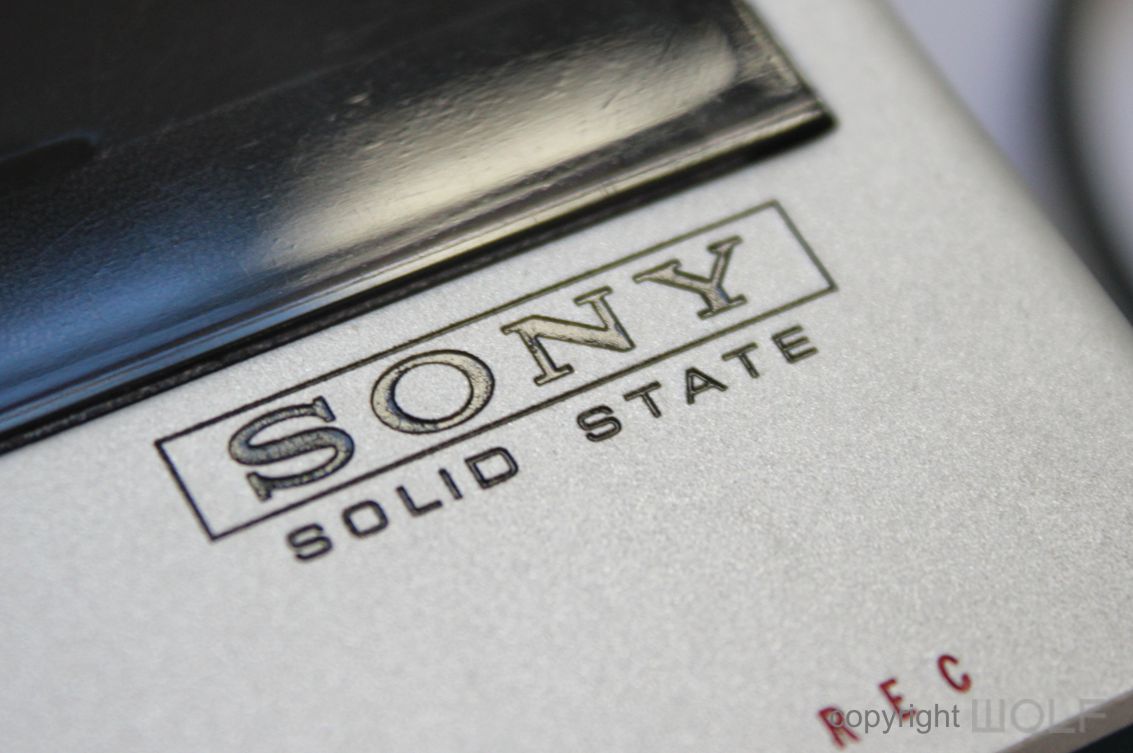
Solid indeed.
Exterior Design Review
The unit is 140mm x 60mm x 237mm and was considered very compact in 1968. The main body is held within a sheet of smooth anodised aluminium that folds down two sided by approximately one inch on either side. It sits flat on a surface with the topside of silver aluminium framing a black mass of plastic which encompasses a speaker and cassette compartment. The design is simple and minimalistic.
From the long profile sides there is a two-tone effect with silver over black. All controls are located on the front edge where the aluminium angles back. Short stubby piano style keys protrude from this angle. The keys are ivory in colour with the furthest right key in bright red. These are then set against a teal green coloured background. The colours are cool yet professional and contrast well against the relatively colourless mass of the unit. Unlike the upper piano key controls, the combination of dials and plug sockets on the lower side look a bit random and inconsistent. There is also a slight beveling to this black plastic under section that somehow does not look harmonious with the sleeker upper section.
ell.
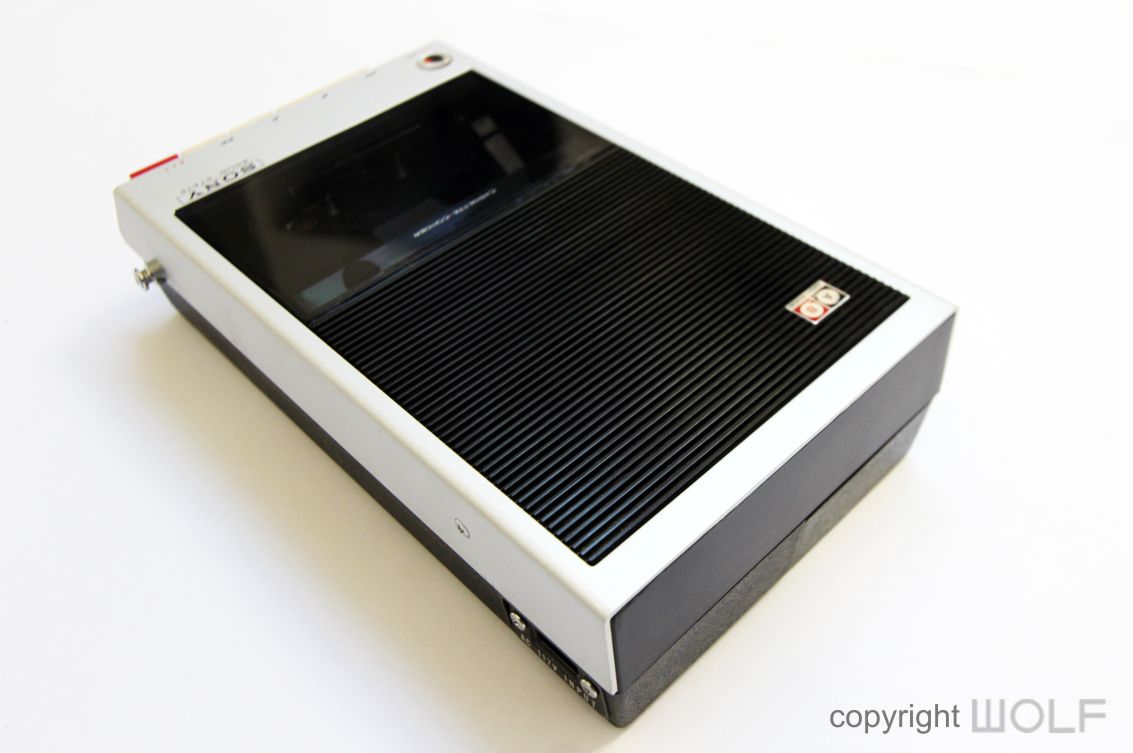
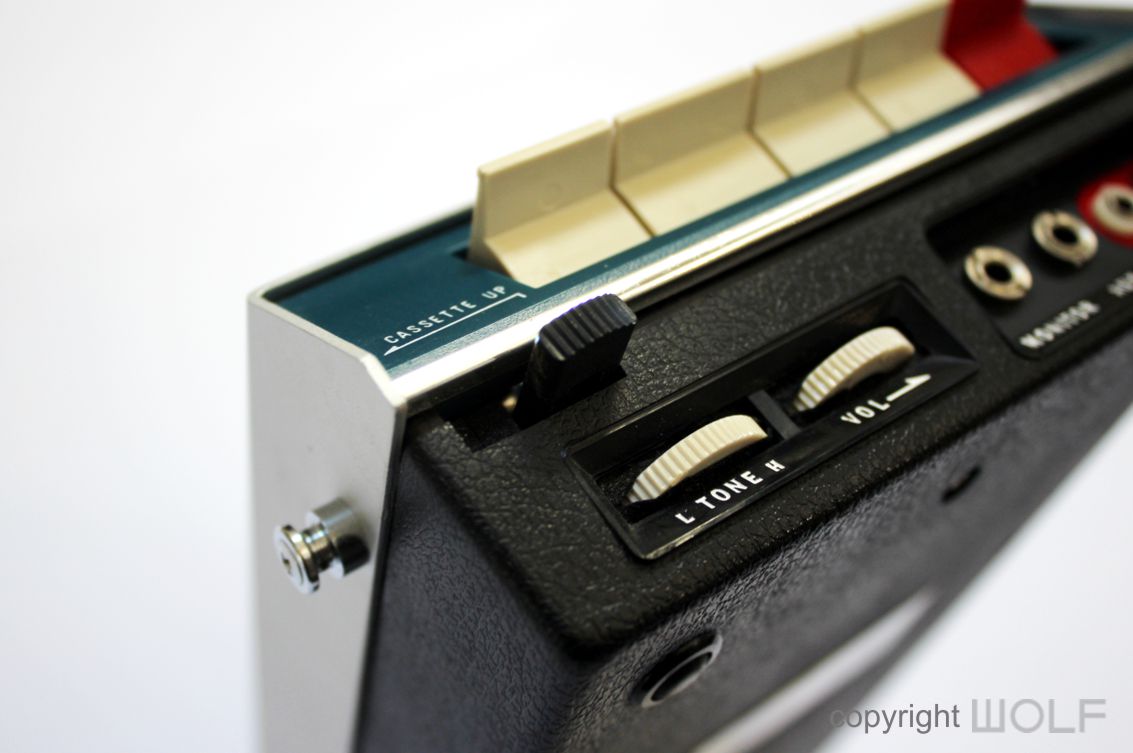

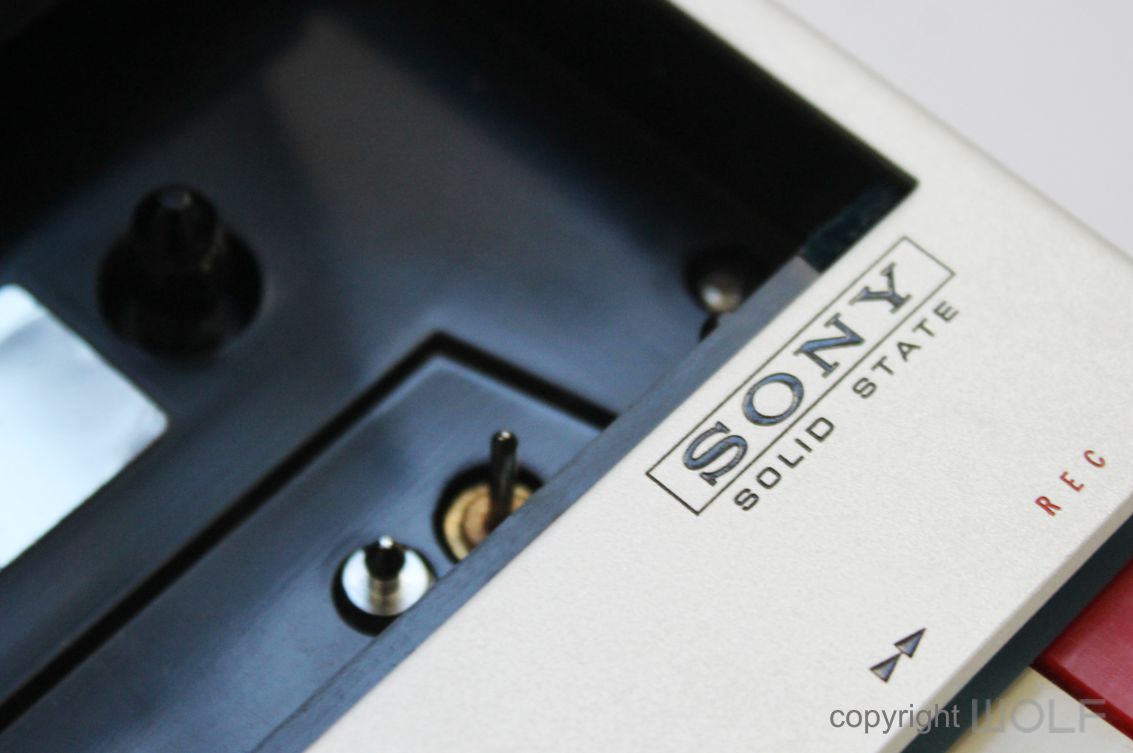
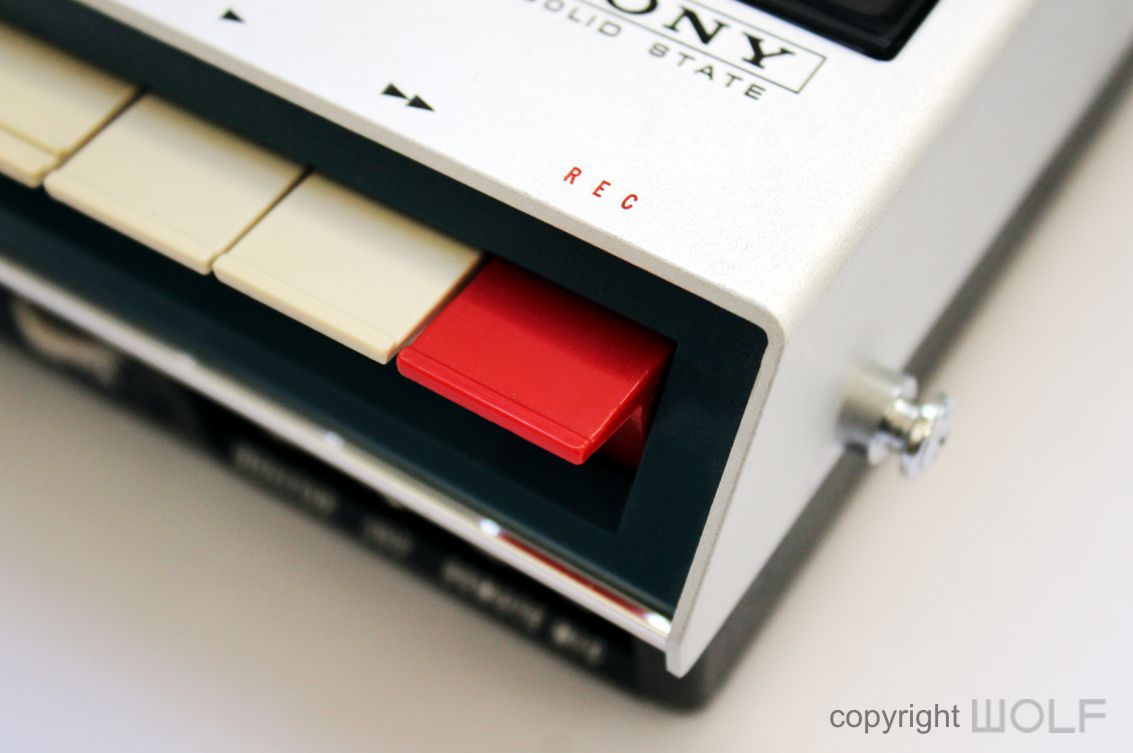
Craftsmanship.
The TC-100 is well built and this is evident by the number of units that still work today. From a craftmanship perspective it looks substantial with its exposed aluminium edges revealing a thickness of 2mm. The plastics are also high-grade and durable though after 50 years many of those ivory keys would have started to discolour and yellow.
The plastic on the underside have a thick leather grain texture which we think looks a little cheap and dates it. While the key buttons are firm and consistent, the combination of dials and plug sockets on the lower side look a bit like standard left over parts and could have been more substantial in our opinion.
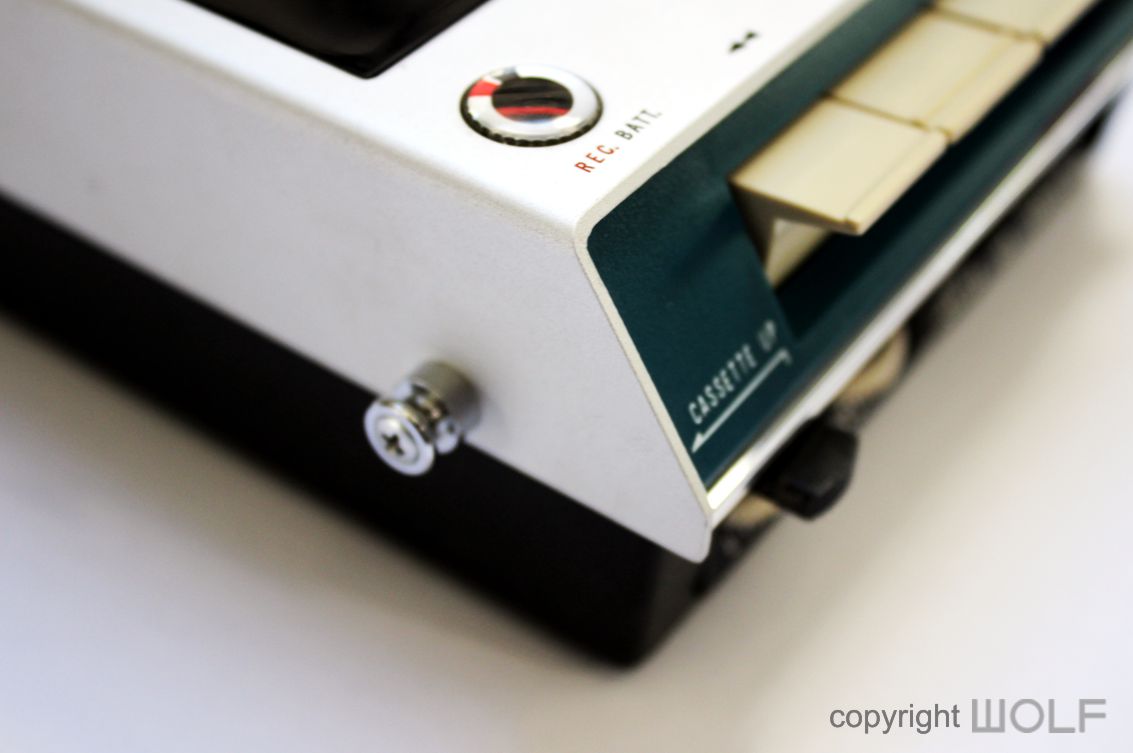

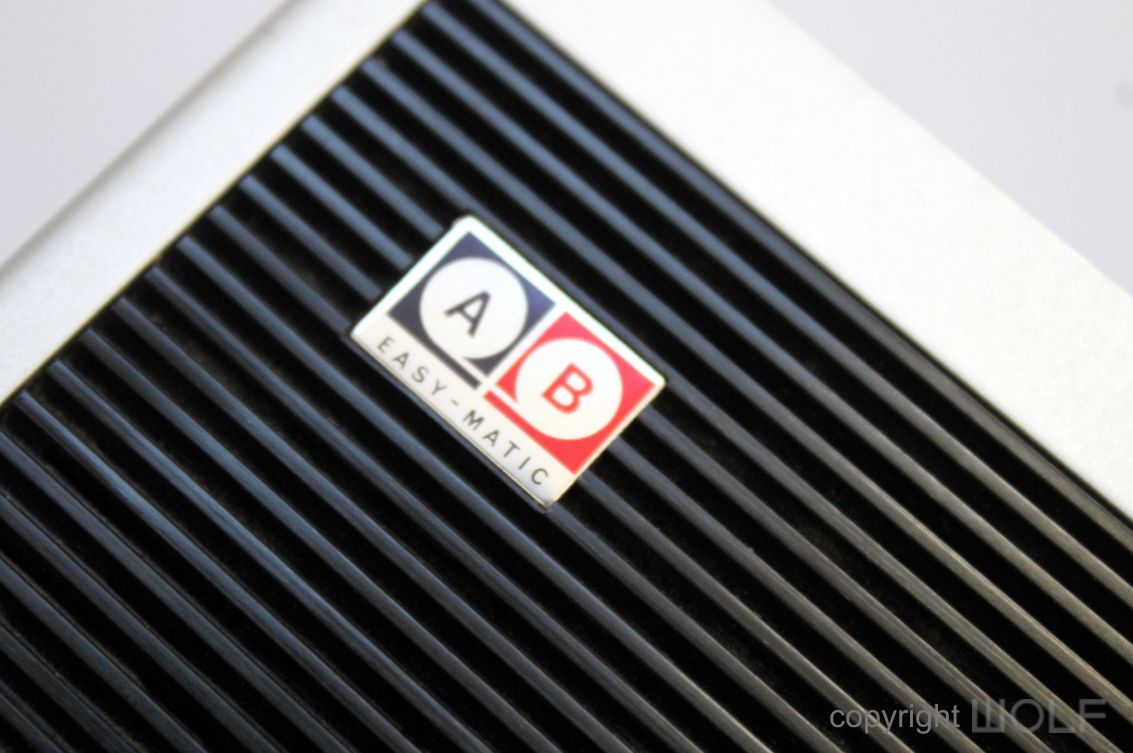


FUNCTION- Experience.
The buttons key buttons protrude from the angled green surface proudly and are easy to access. While compact for the day the unit is weighty so you wouldn’t want to drop it on your toes. It does have screws on the sides to connect with a shoulder strap.
The cassette compartment on the top is well considered for easy access and with the speaker facing upwards the sound is as good as it can be for the technology available at the time. The speaker grill with its grooves are hard to clean and those that have not been stored properly tend to be caked full of dust and dirt.
The microphone is compact, minimalistic and connects with a simple cord. The battery is accessed from the underside and bulky but reasonable as expected for what was available in the day.
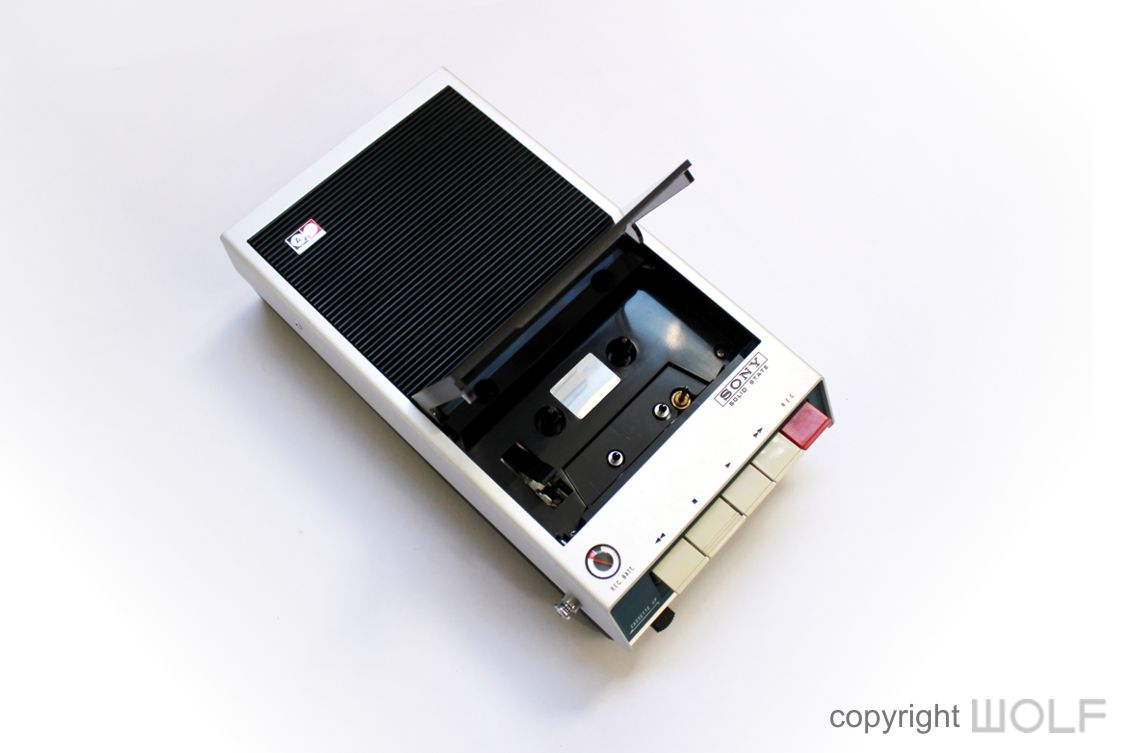
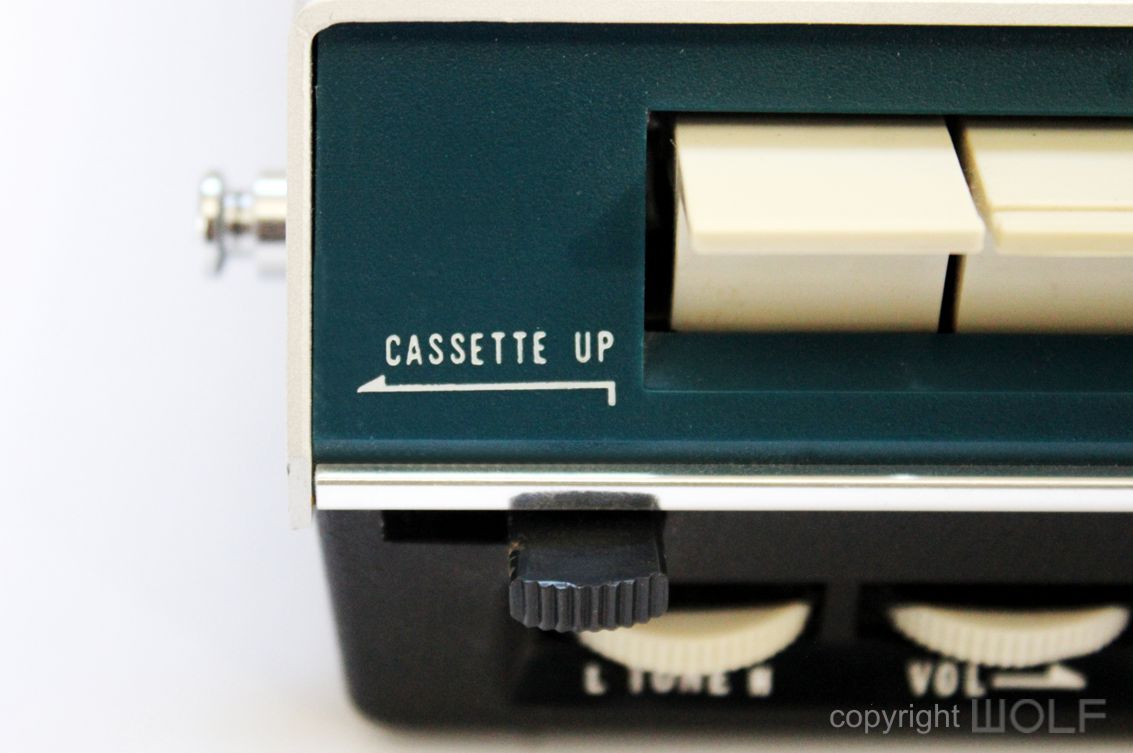
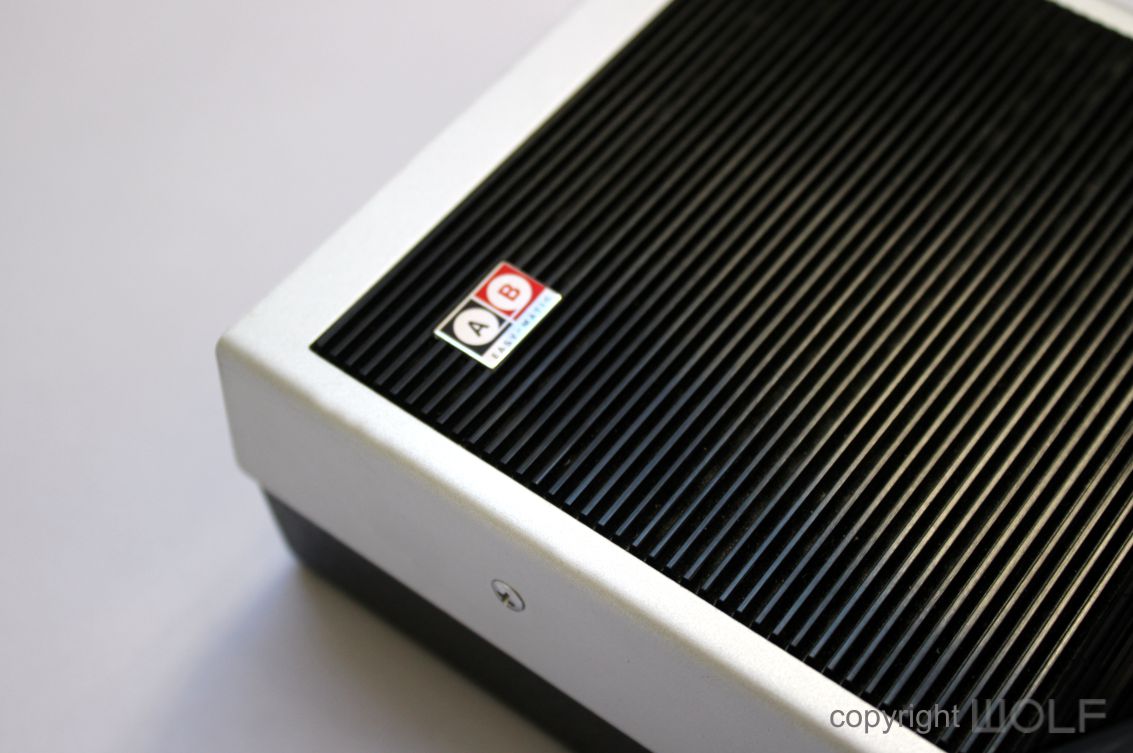
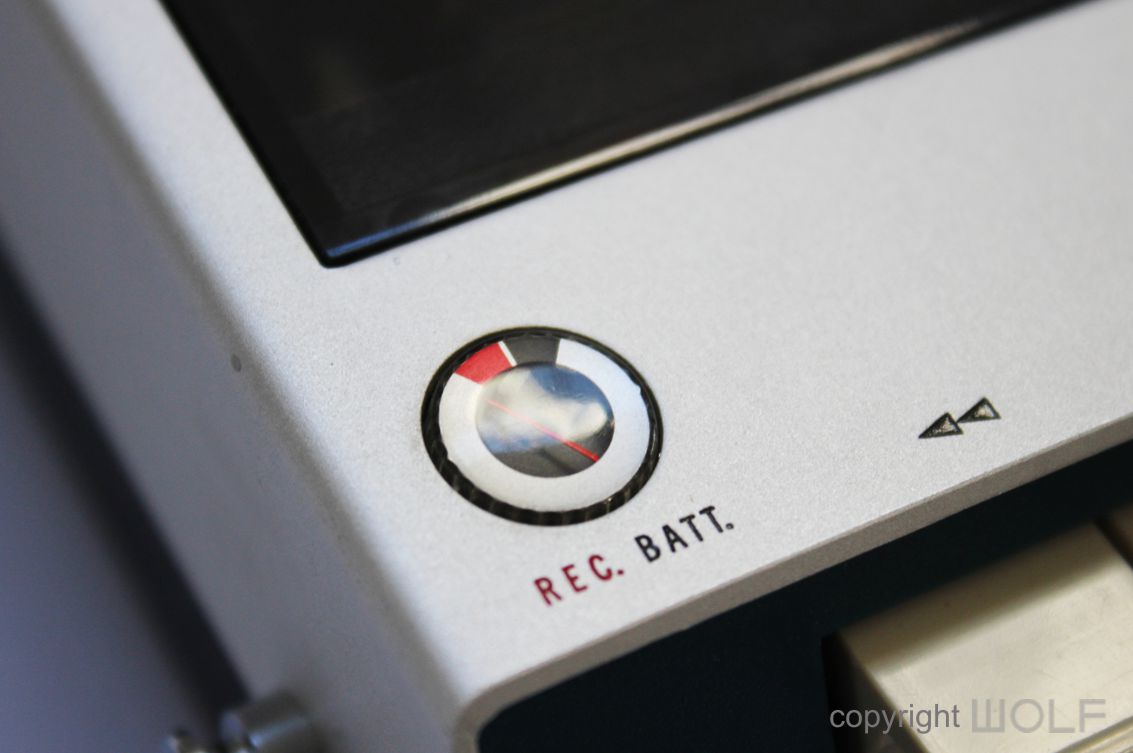
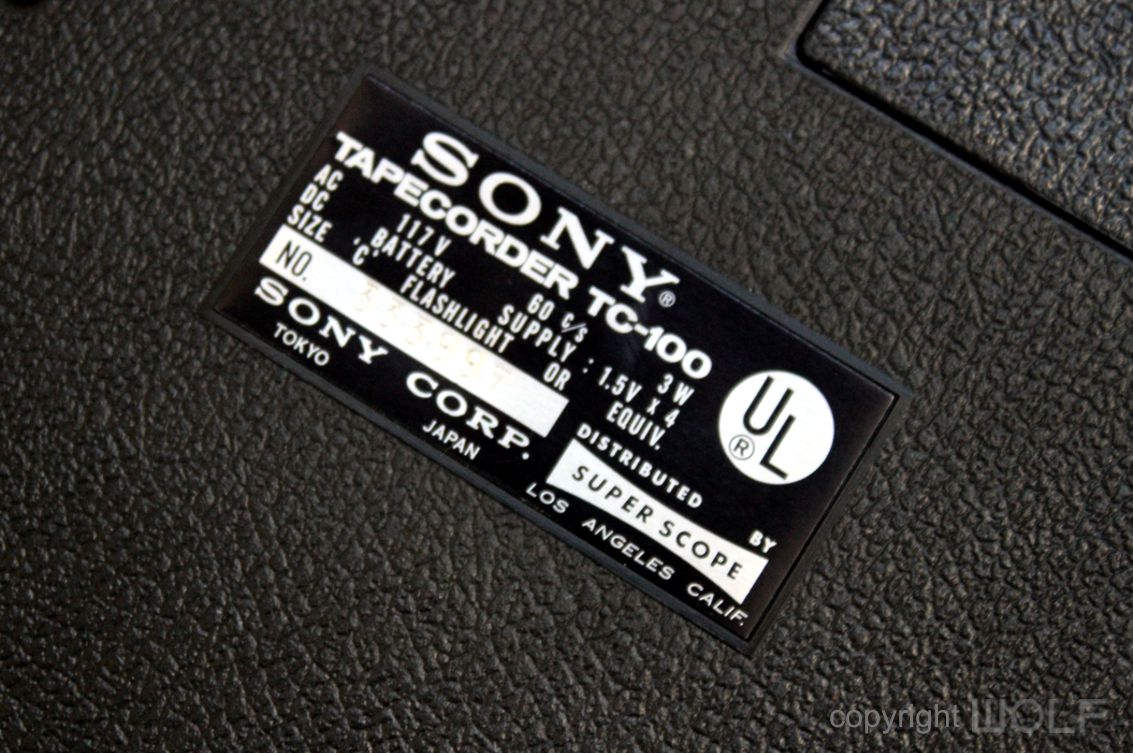
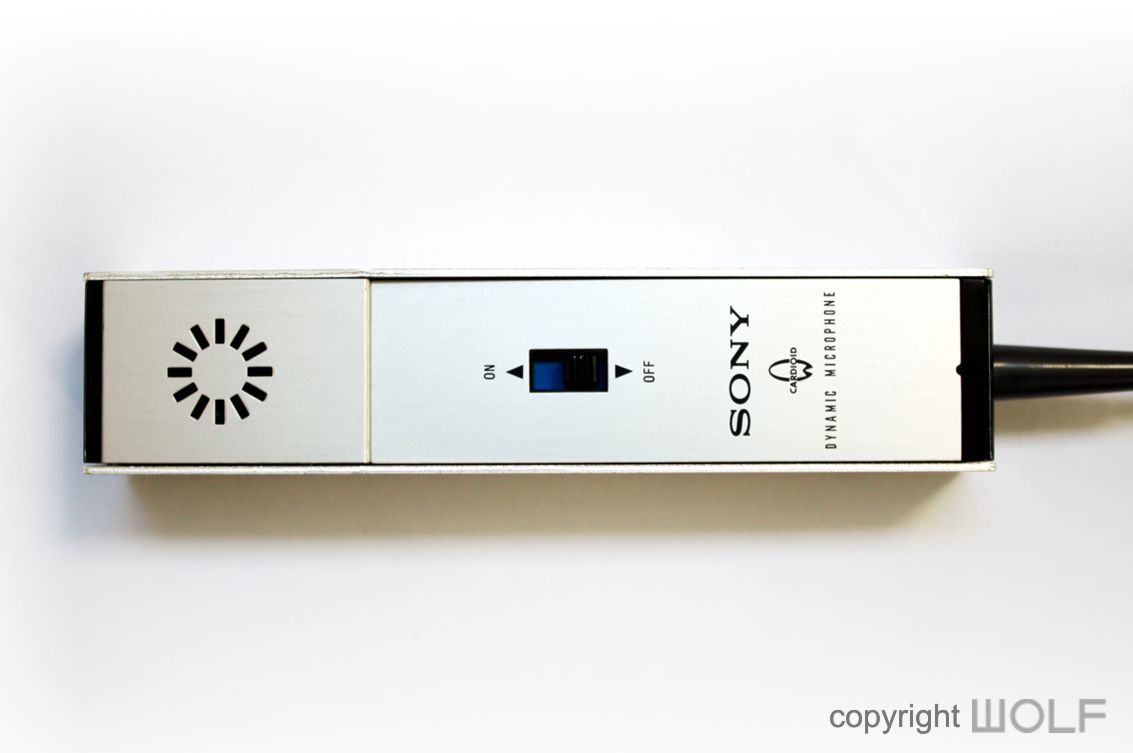
Desirability / Collectability and what to look for.
The TC-100A was not only important for SONY but an industry milestone for both promoting the cassette tape as well as the idea of compact portability. Despite this it receives little recognition and in our opinion is highly under rated and undervalued. Mint examples with many accessories can still be picked up for under $100 which in our opinion is a bargain.

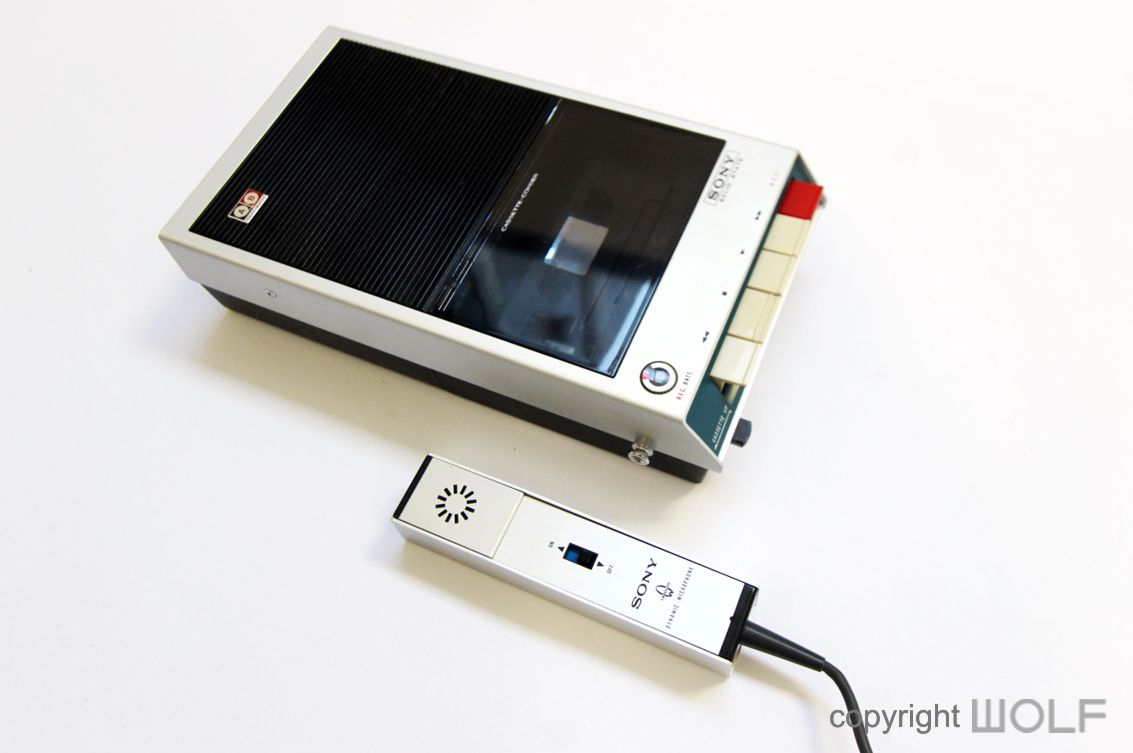
WORD OF THE WOLF
The TC-100A is less desirable than many average 80s Walkman units and this is mainly due to its rather bland design and chunky weightiness. Nevertheless, it is a significant piece of audio history and once that is more widely recognised its value is sure to increase. Now is a great time to invest in a mint example, perhaps even with original box and paperwork. Don’t be surprised if it still works as they were built to last.


The protective cases were practical but relatively unattractive.

Original instruction manual (Left), Japanese single sheet brochure (right)
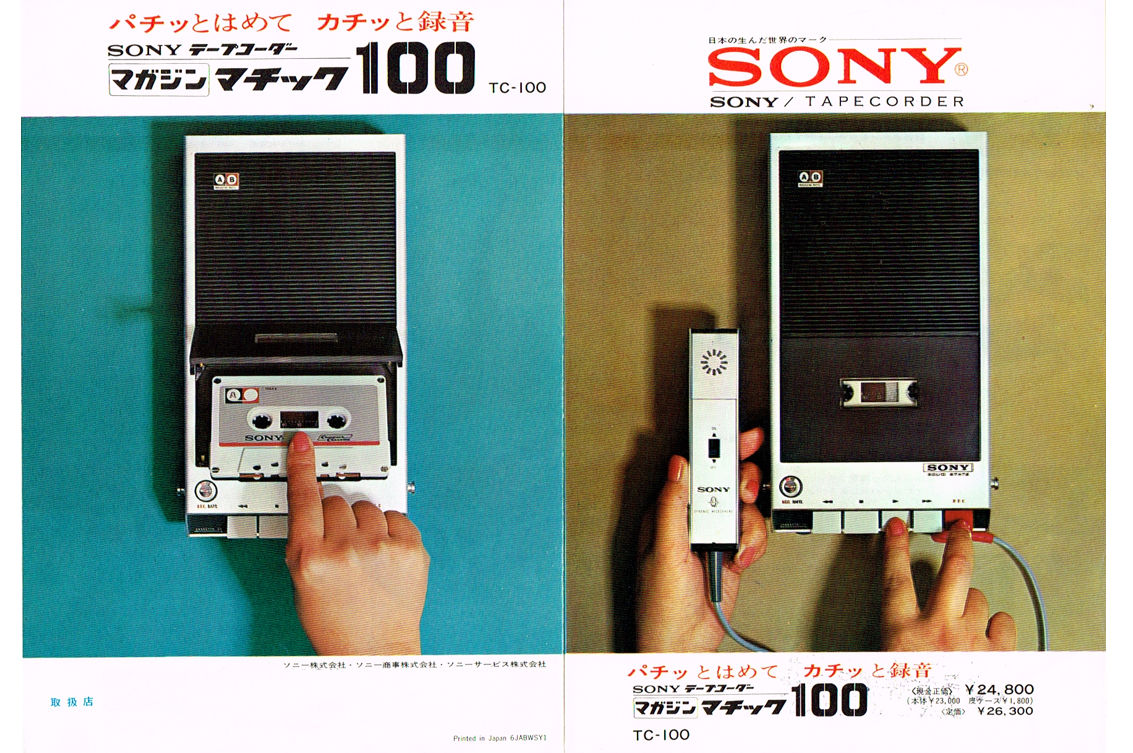
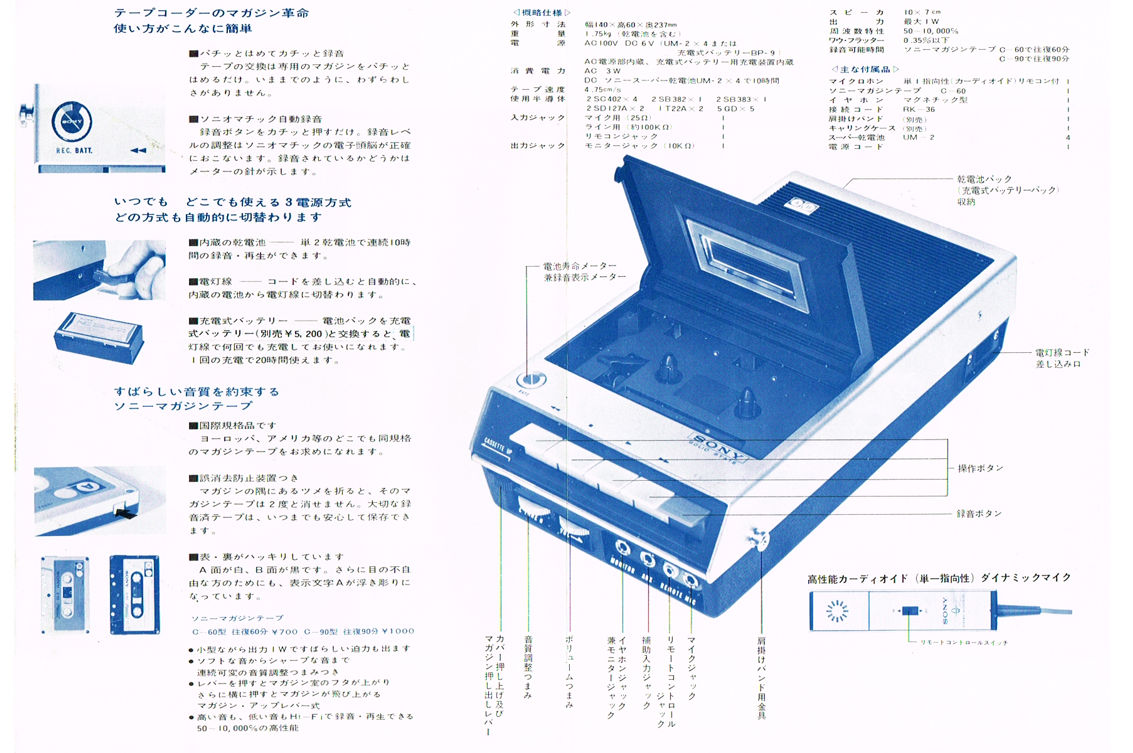
The Japanese brochure.
WOLF DESIGN EXCELLENCE SCORE = 5.8
Disclaimer
The information in this review is intended for informational or educational purposes to provide readers an understanding of how something may be seen from a certain design perspective. In this case it is from the view point of WOLF DESIGNS. As design is subjective this review should only be considered as an independent opinion. Information further to being of an opinion is provided to the best of our knowledge based on our own research at the time of doing the review. We cannot be held responsible for any inaccuracies or inconsistencies and reserve the right to change or update any content as appropriate.
The final responsibility of the design resides with the original manufacturer.
